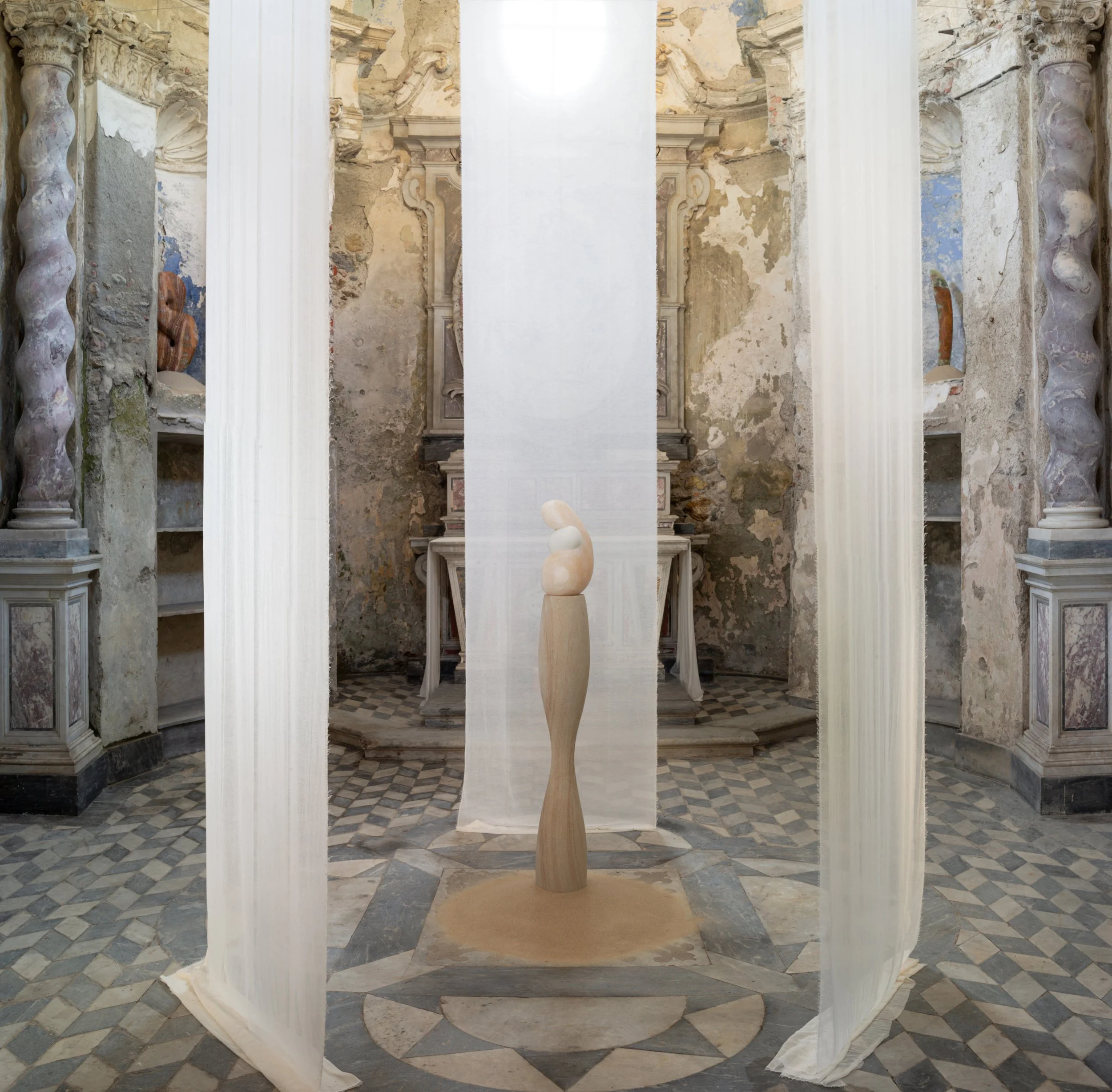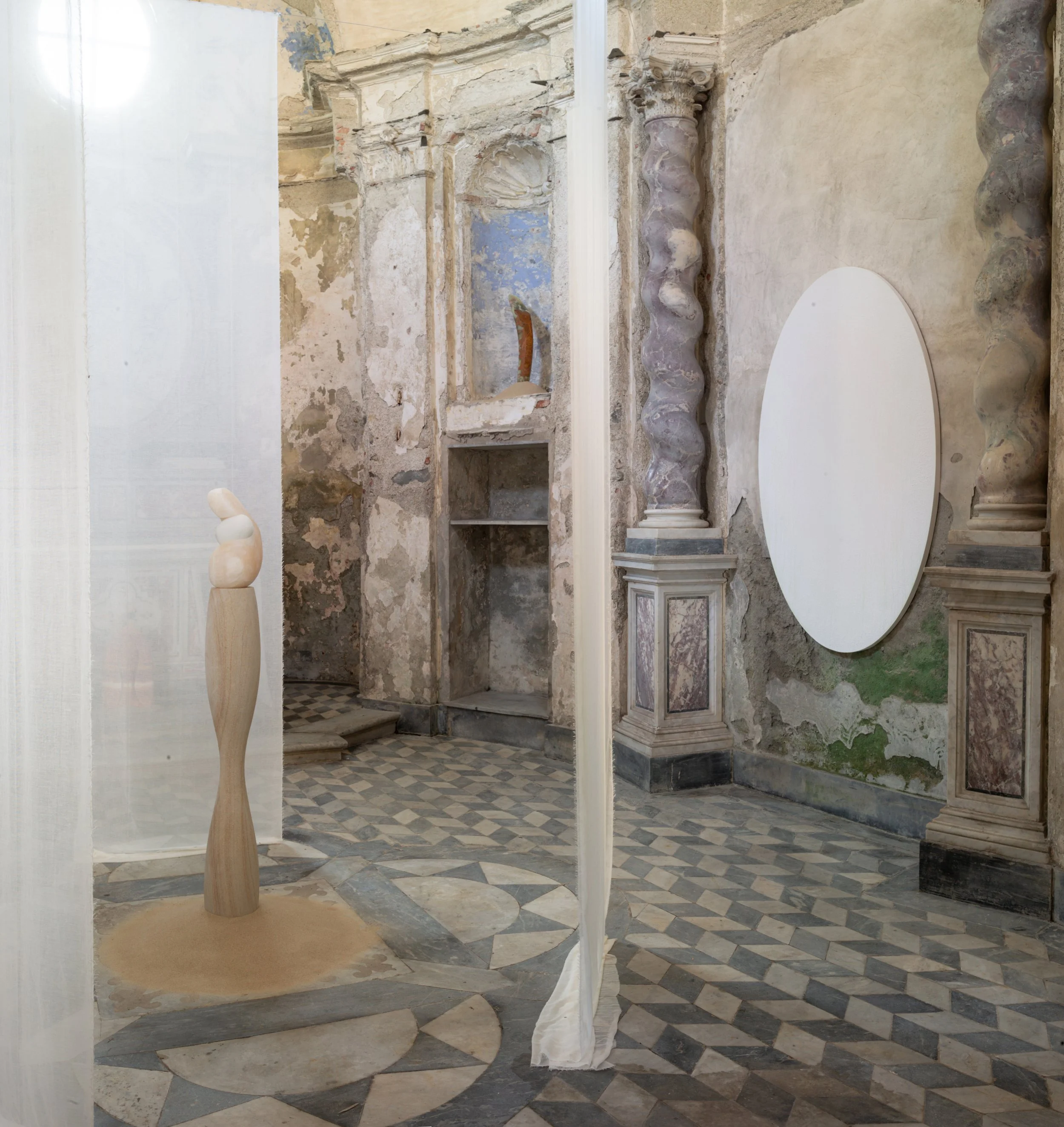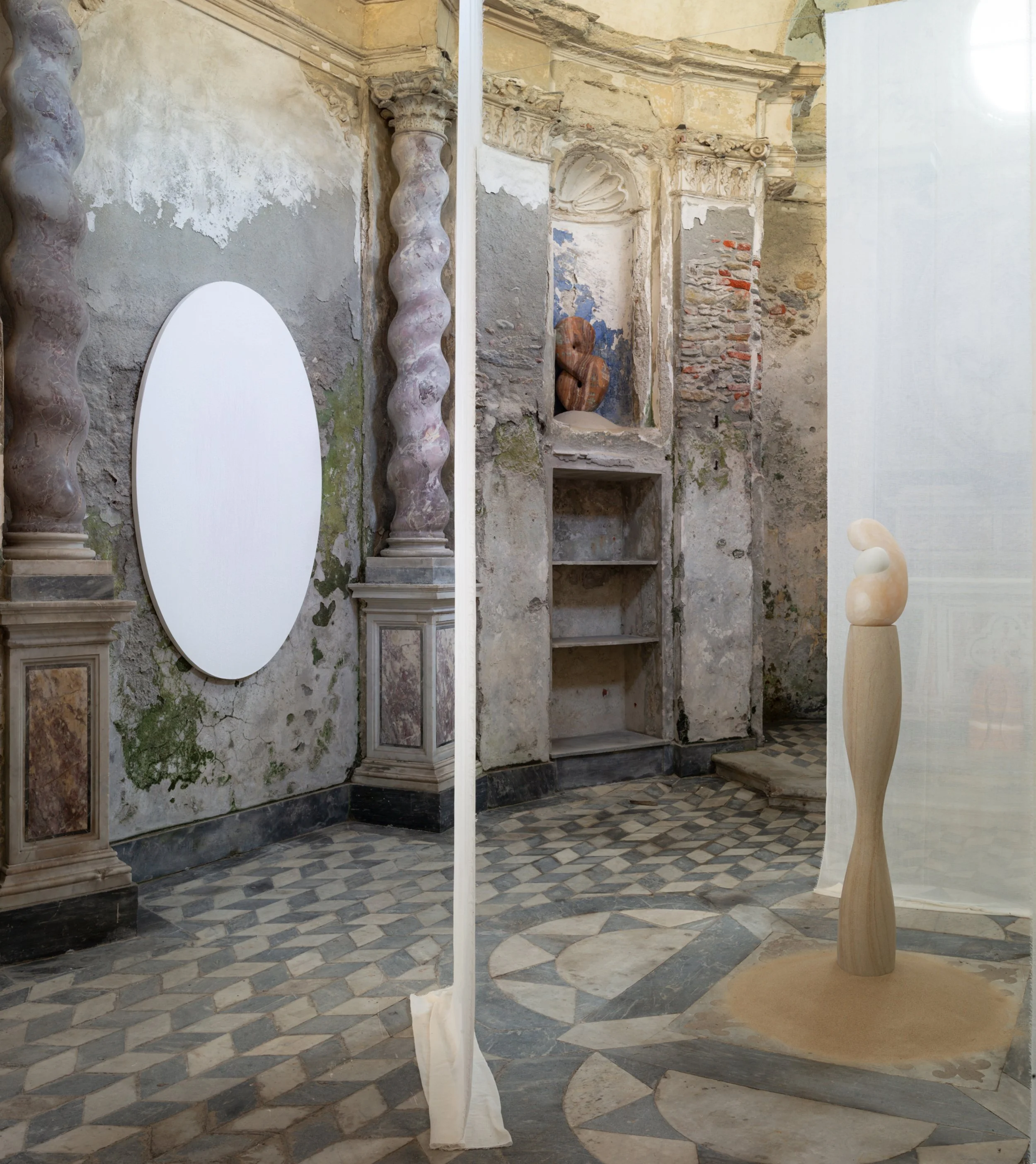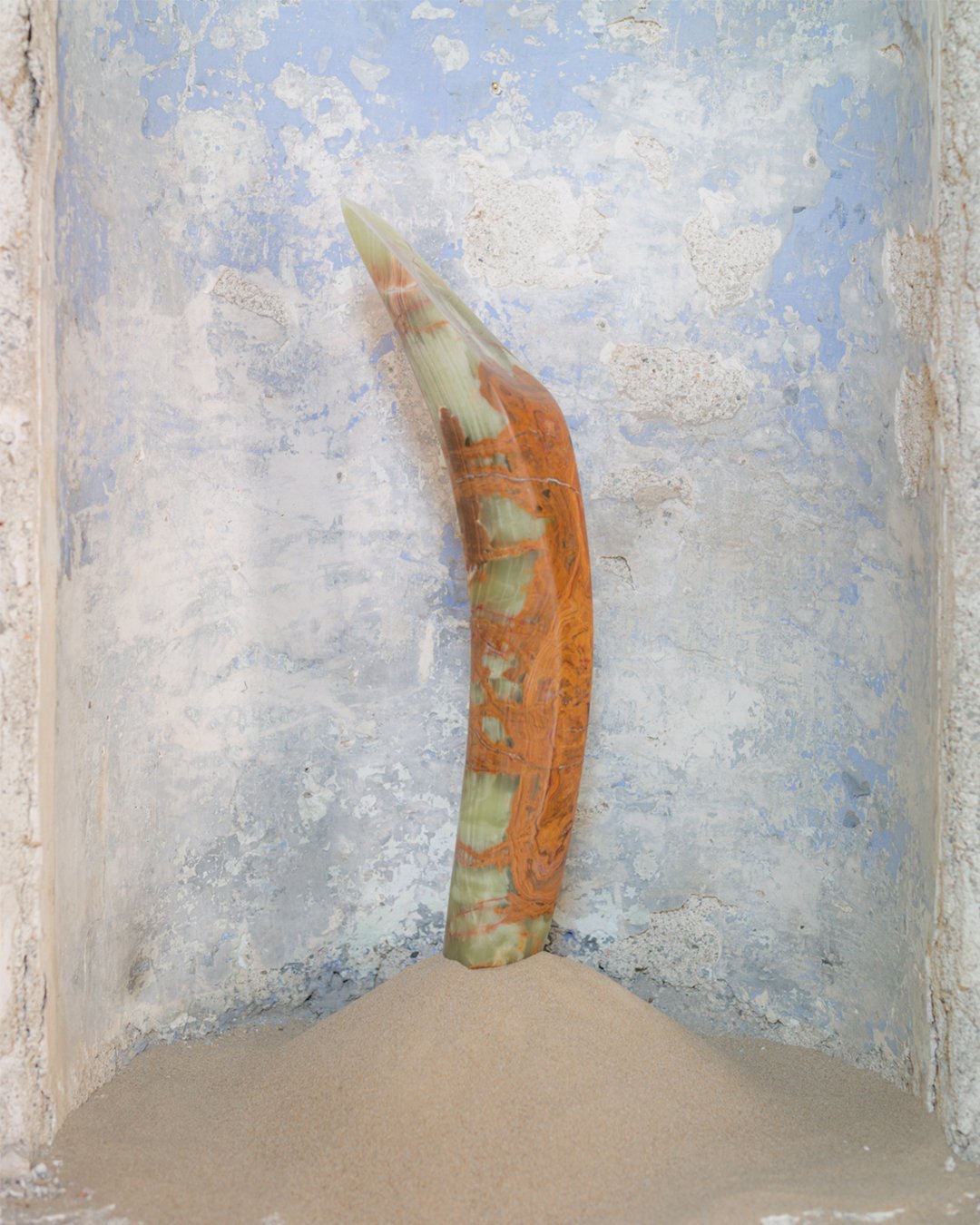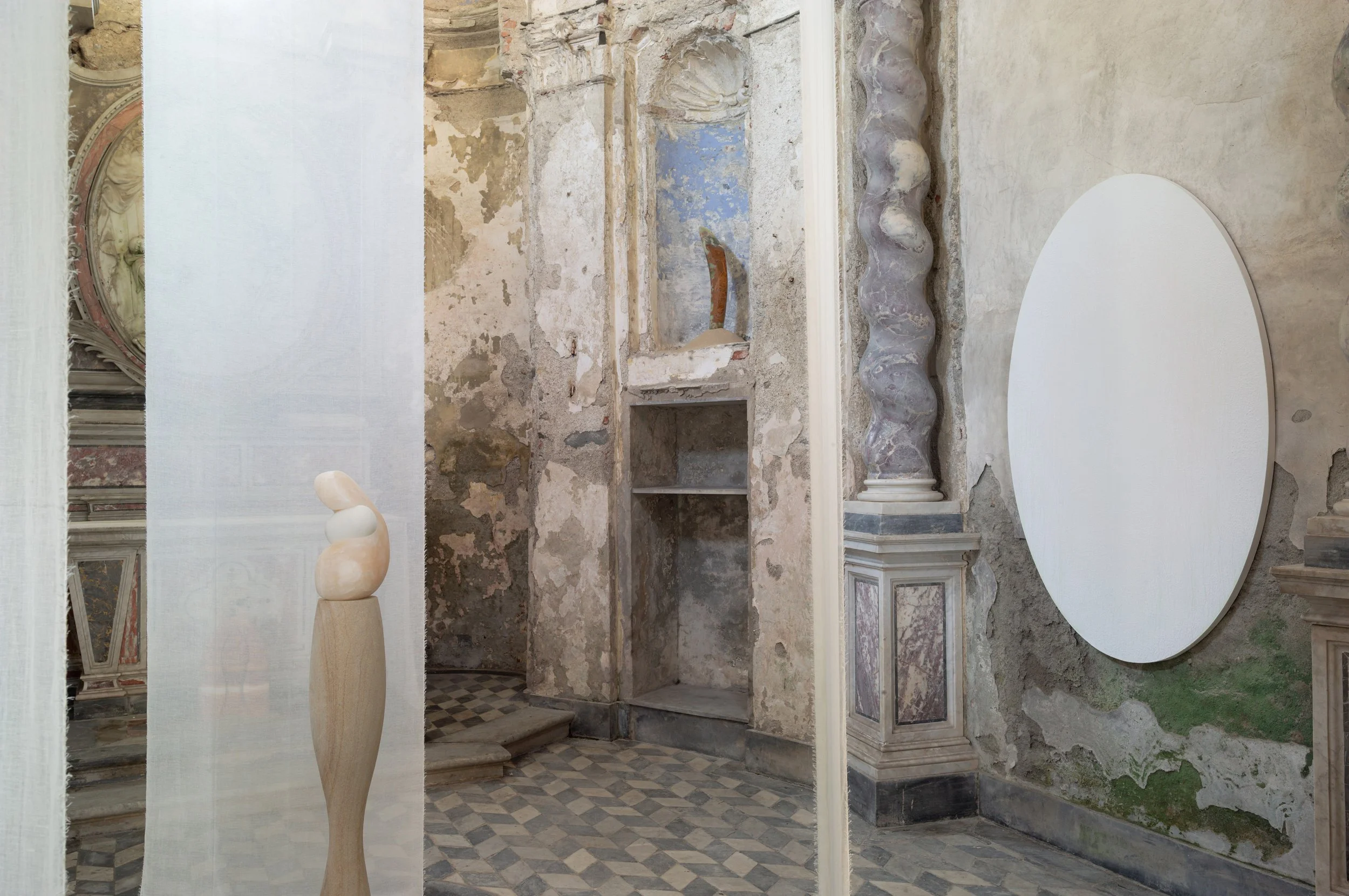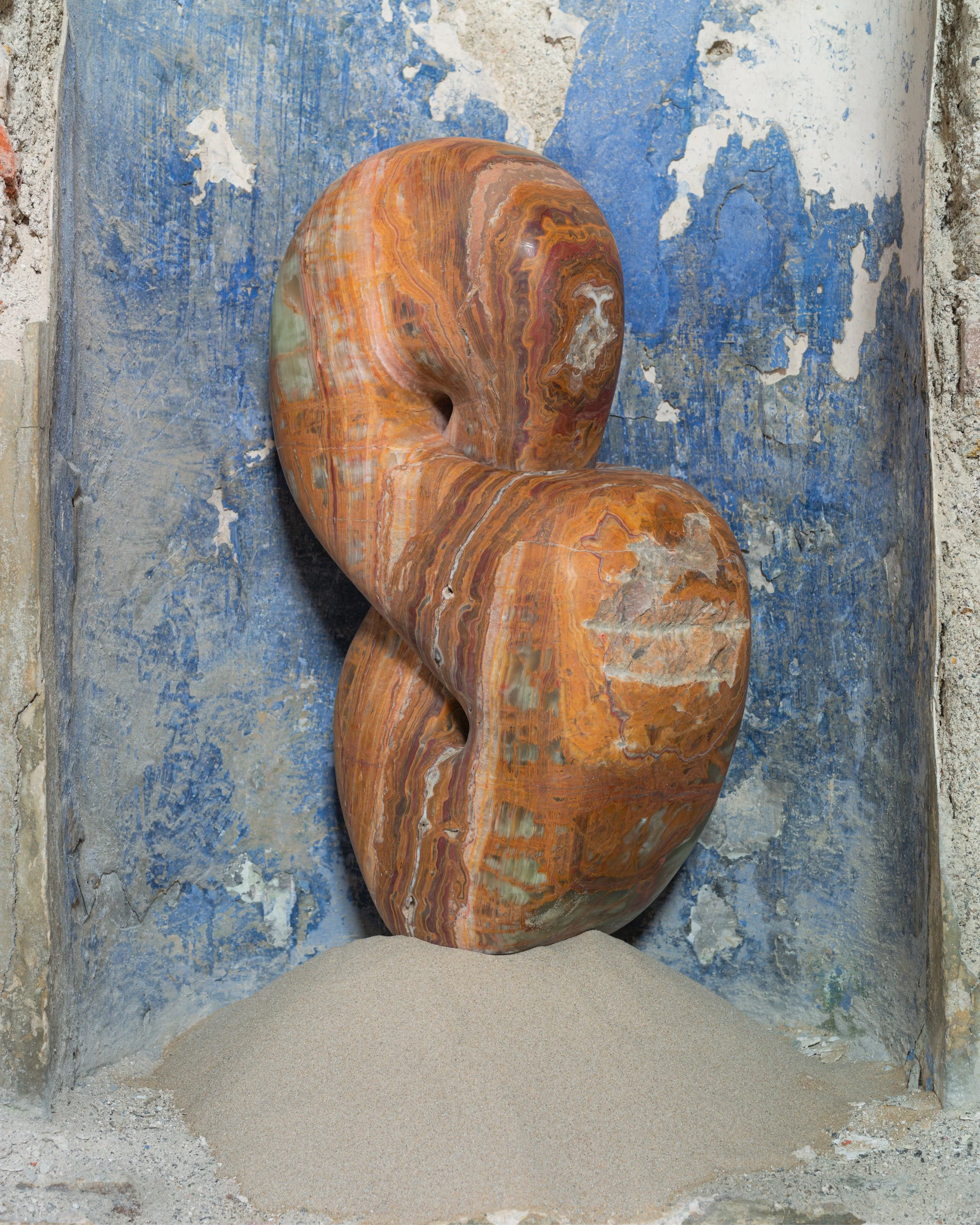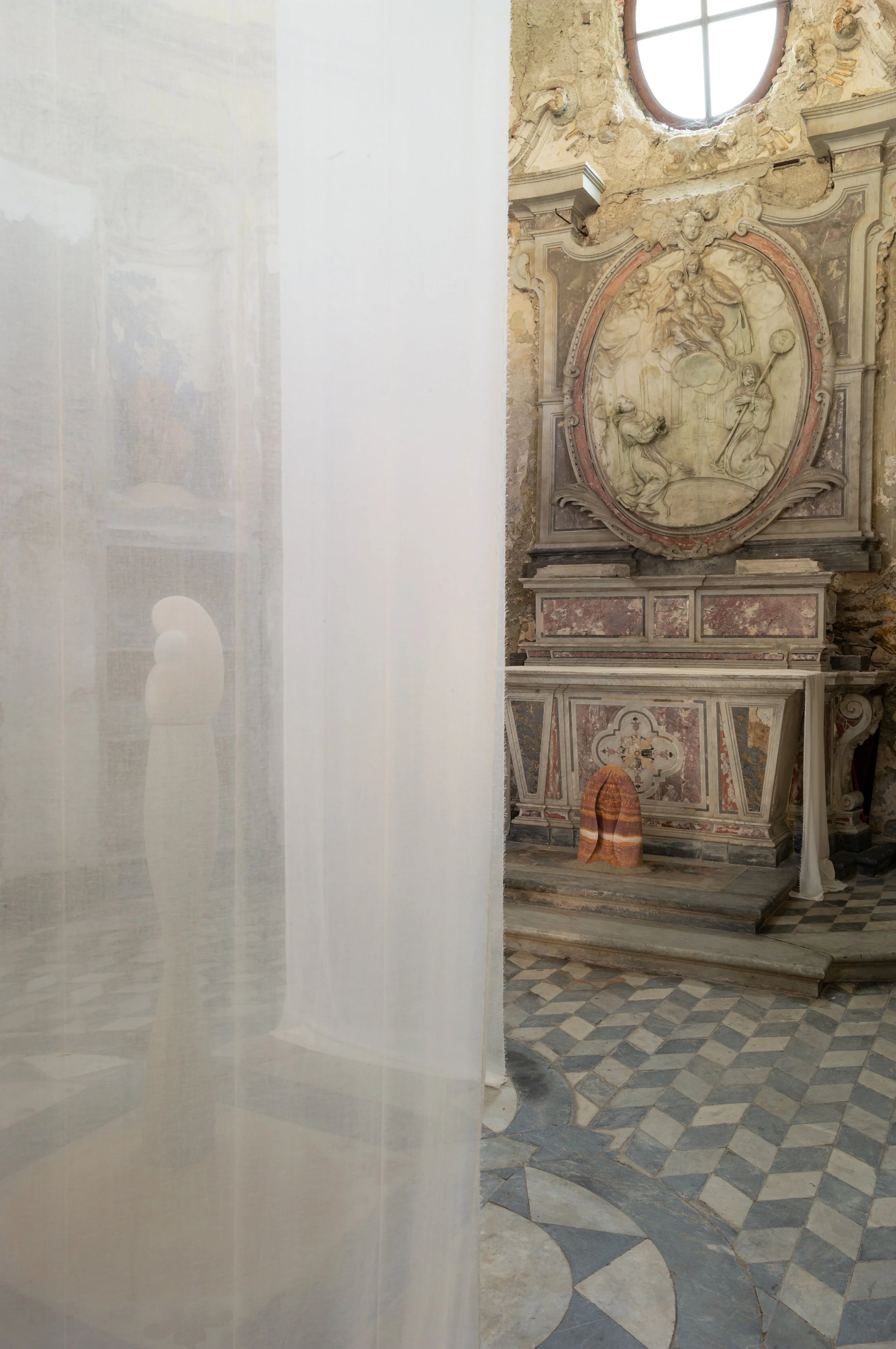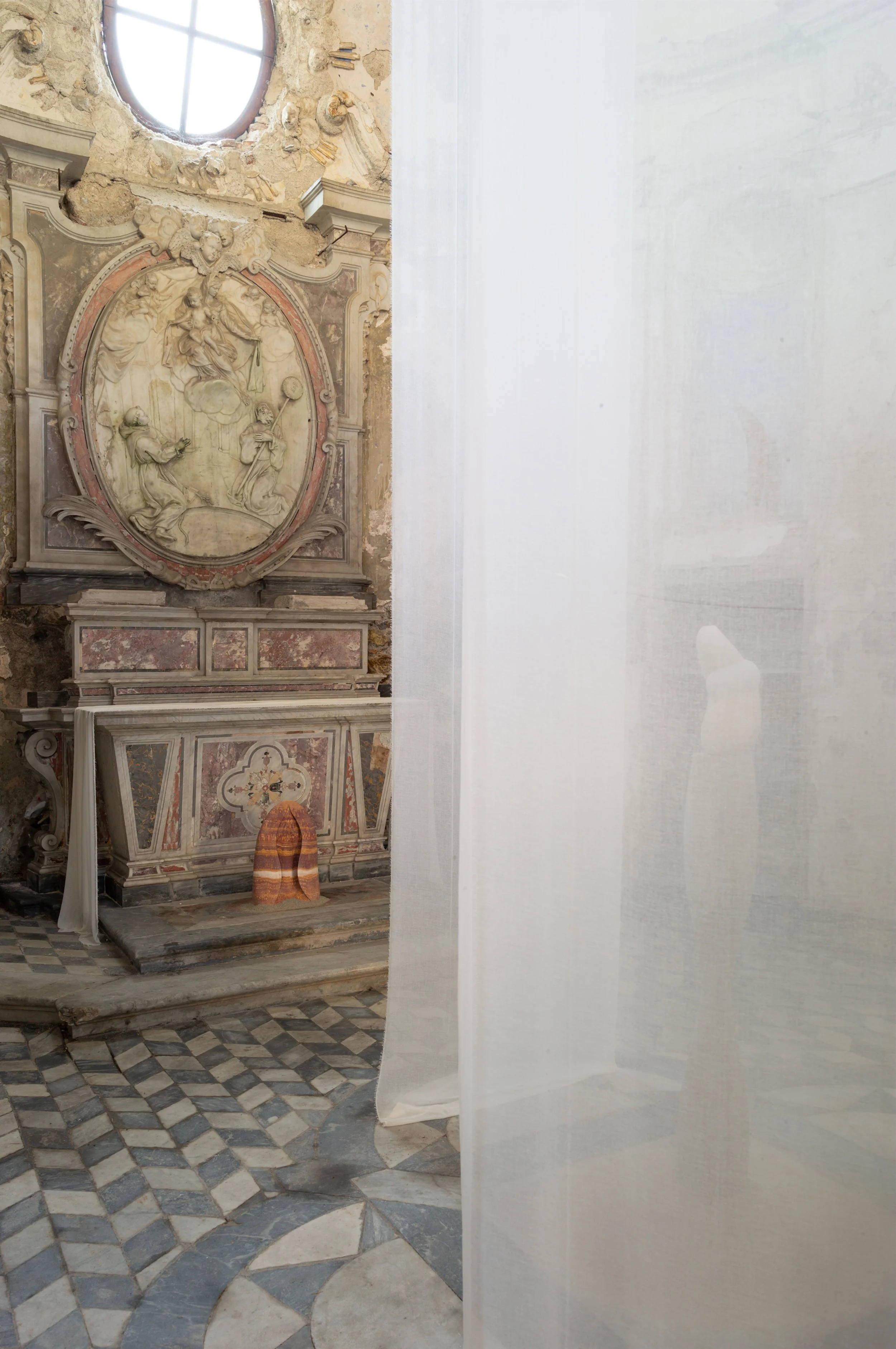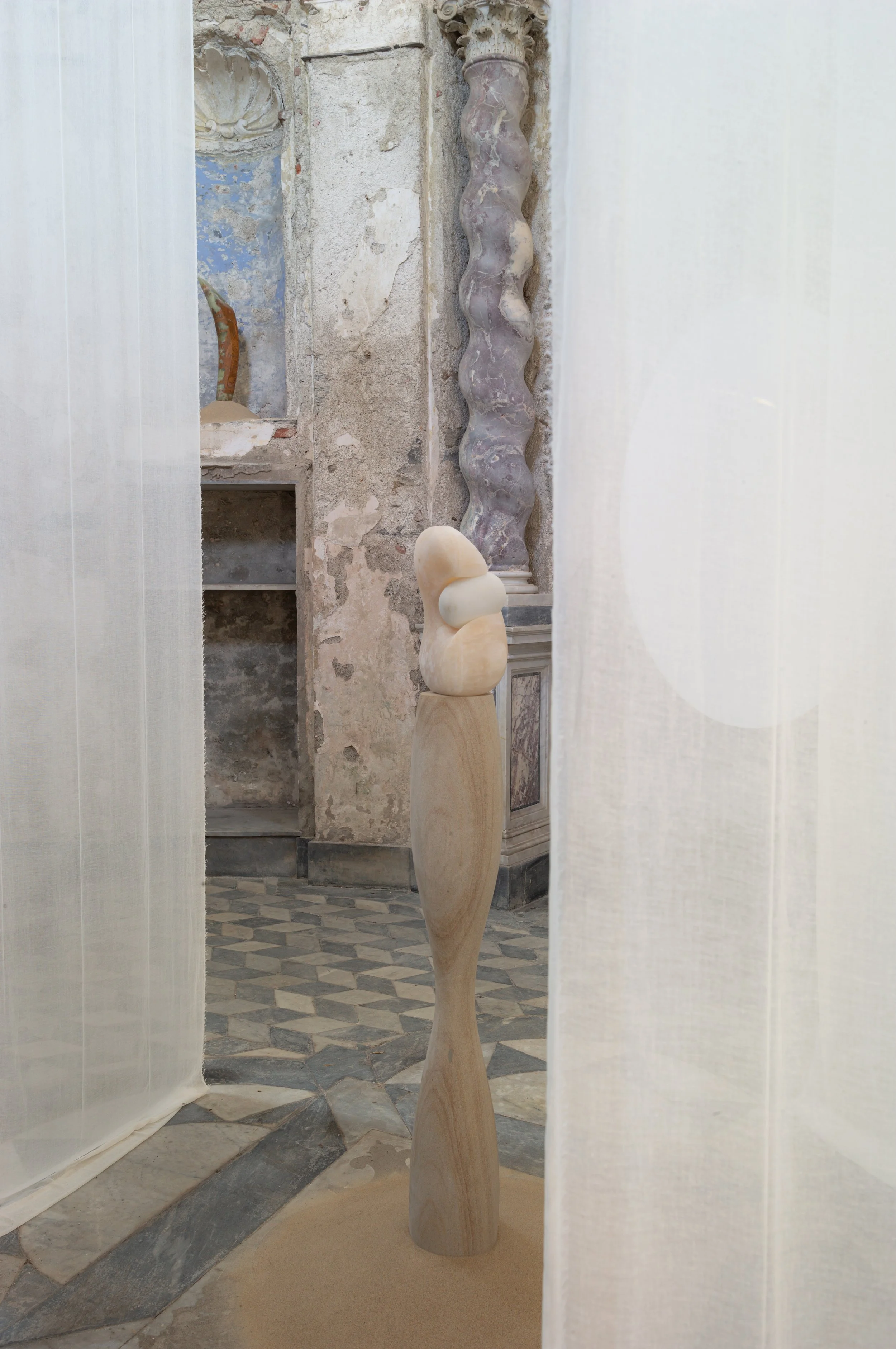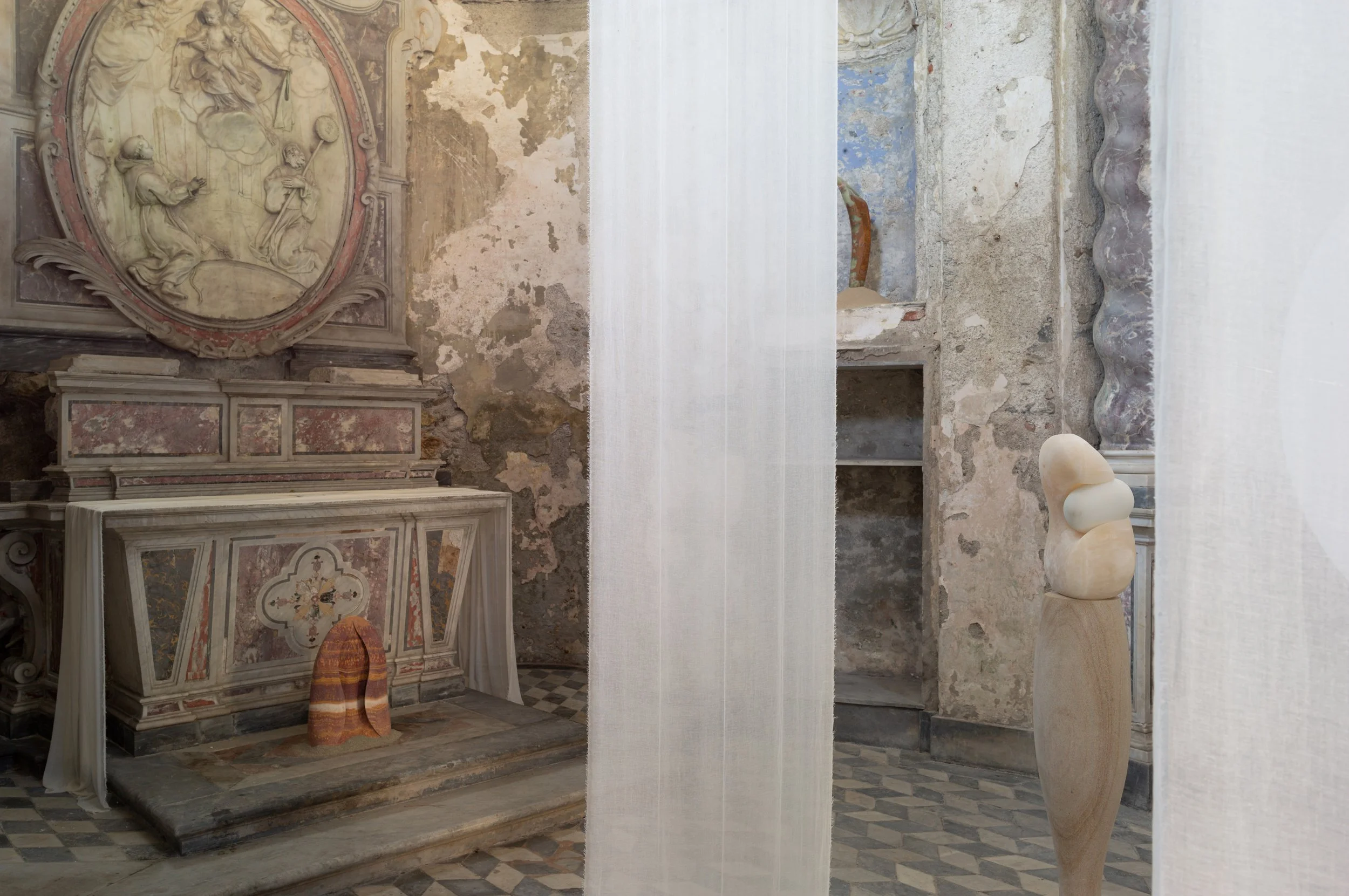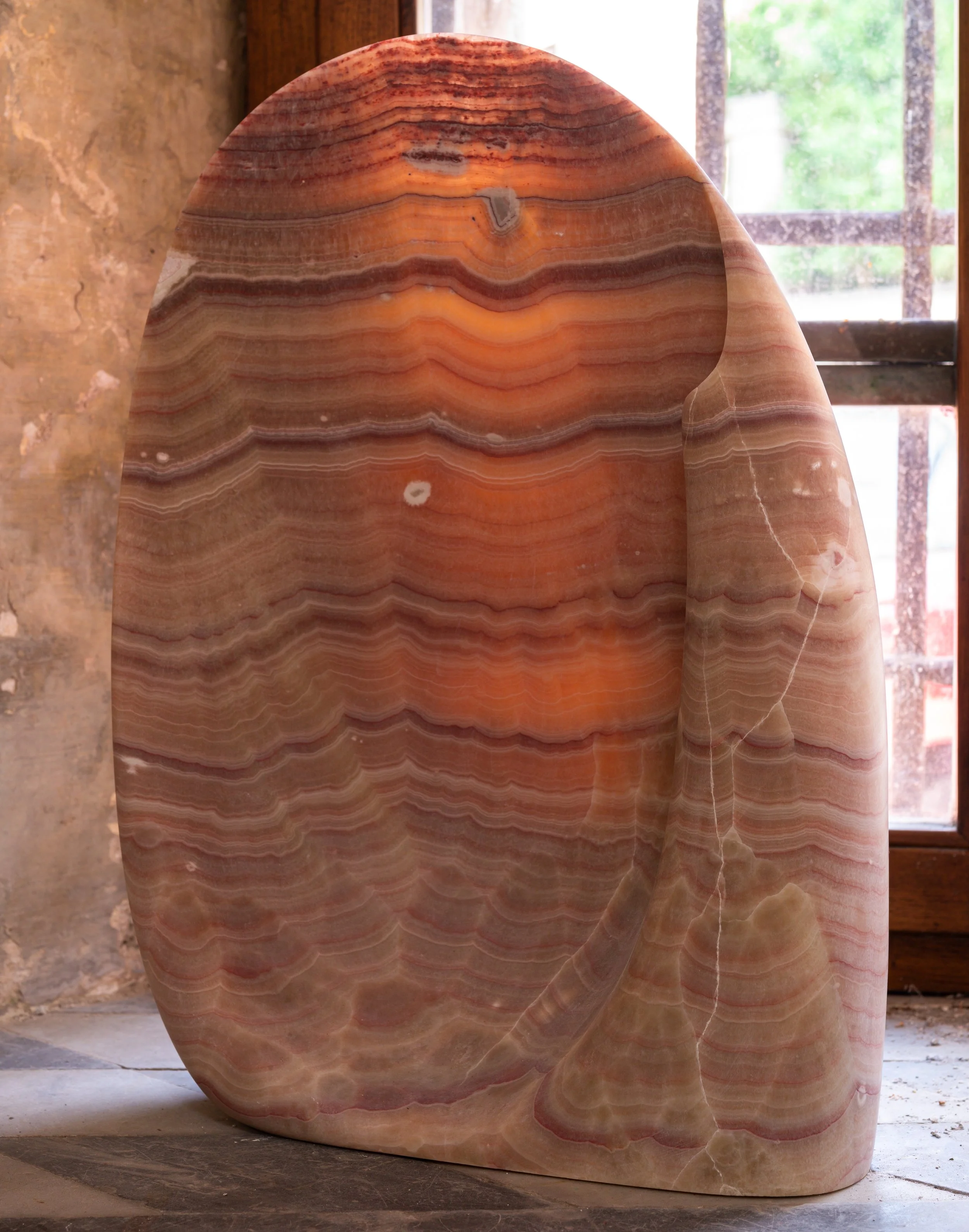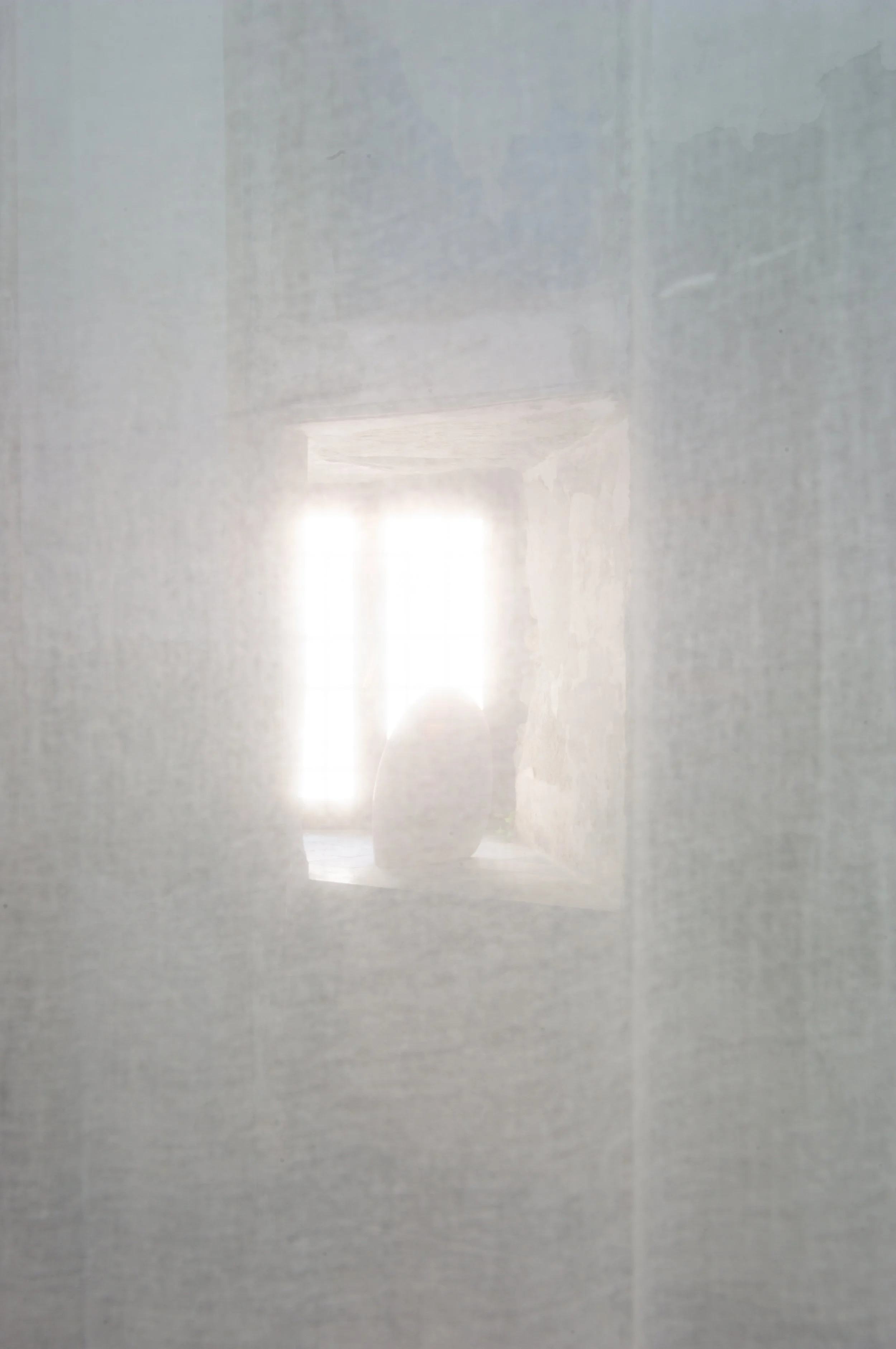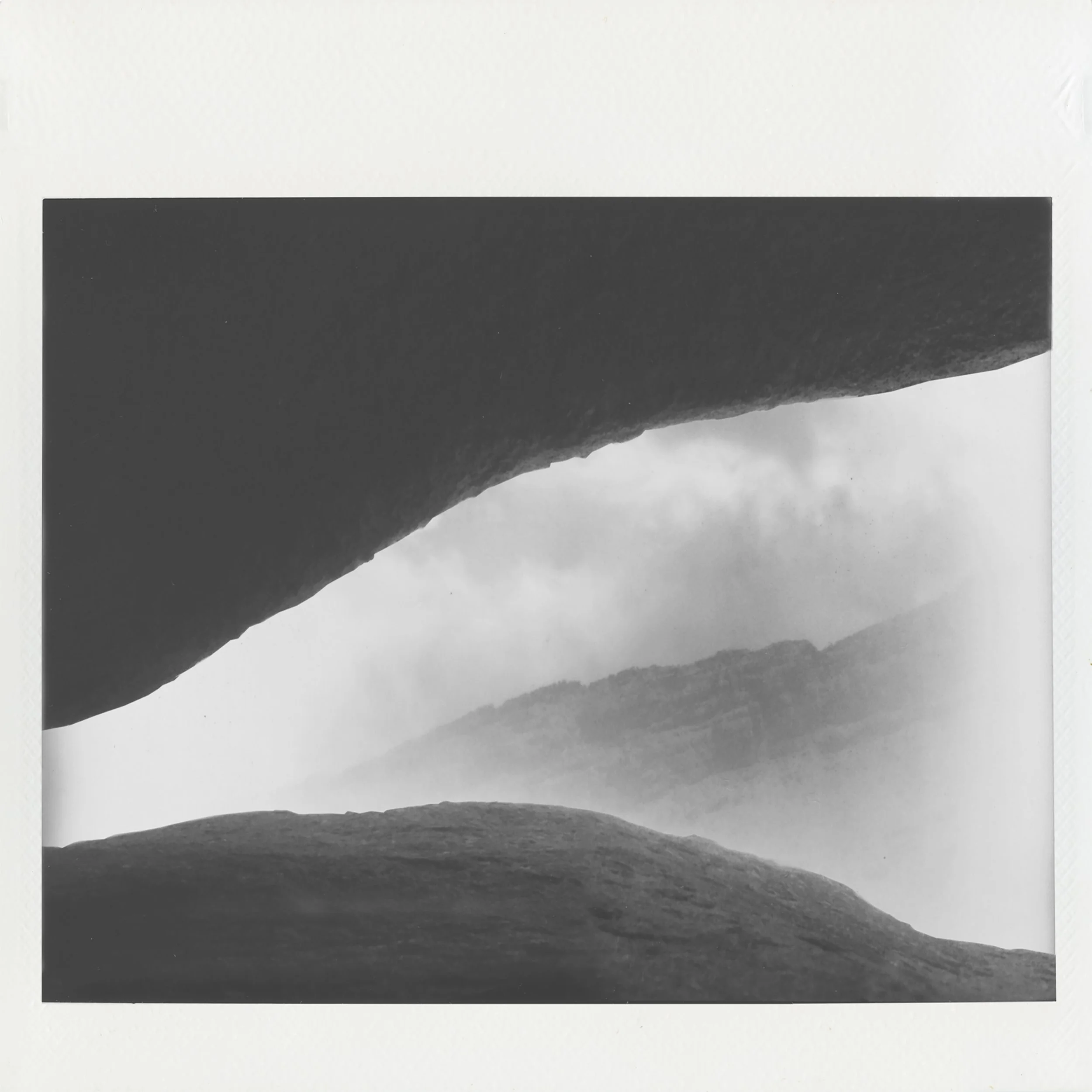Translation of words by curator Lorenzo Belli
With Tesoro, Abdus Salaam presents his first institutional solo exhibition in Europe, welcoming visitors into a space suspended between history and spirituality: the Cappella Marchi in Seravezza. Once a place of popular worship, Cappella Marchi now becomes the stage for a universal devotion that transcends religion, ethnicity, and language. This space, historically consecrated to silence and prayer, provides the ideal setting for an art that seeks depth-not to impress, but to awaken.
Where once prayers were raised, Salaam’s sculpture now invites an inner, collective, and universal dialogue.
A South African sculptor and poet, Salaam brings to his artistic practice a profound spiritual reflection that draws from and unites the philosophies of the Abrahamic, Buddhist, and Hindu traditions. His art is rooted in gesture, manual devotion, and direct action. Like Wagner’s pursuit of the Gesamtkunstwerk—the total work of art-Salaam merges sculpture, music, poetry, and painting into a single living, sacred body.
At the heart of the exhibition lies Tesoro I, a sculpture in which statuario marble and creamy onyx meet in a tension of opposites: permanence and fragility, classicism and intimacy, love and surrender. The marble, sourced from the ancient Roman quarries of Seravezza, is embraced by Iranian onyx—a material traditionally used for decoration—that here takes on the role of one driven by love and devotion, yet always on the edge of loss.
As in the chapel’s high-relief where the Madonna holds the infant Jesus, so too in Tesoro I, the sacred is found in the act of loving without fear of loss. Here, matter is not just a means to an end, but also a bearer of love and fear. The hourglass-shaped sandstone base evokes the passage of time, suggesting that the distance between love and loss is time itself, while the eroded fragments at the sculpture’s base evoke the vulnerability of existence.
The entire exhibition is accompanied by a musical composition created by the artist during moments of lived experience and contemplation. It configures the show as a soundscape where the sculptures “listen” to the music that inspired their form, and the paintings preserve its memory.
The connection between sound, gesture, and light permeates the entire installation, transforming the chapel into a sensitive, perceptive organism. As he writes, “Exhibited in a place charged with memory and spirituality, Tesoro is not just a show, but a visual liturgy.” A similar sensitivity is echoed in the work of Maya Lin, who shapes spaces of remembrance and introspection where vulnerability emerges with quiet, almost sacred, sobriety.
Salaam enters into dialogue with sacred architecture without imposing on it. His works are thus inserted with respect and resonance: from the two lilac onyx leaves titled Open to the Light, standing in the windows like living stained glass, to the sculptures within the niches-once home to saints-now replaced by abstract forms that evoke sanctity. Among these, Ennobled and In-finite embody the spiritual journey from fragmentation to grace. Beneath the altar, Even the Flames of Fear concludes the journey with an onyx sculpture in warm, earthy tones, reminiscent of a votive vessel.
In listening to the stone as a living body traversed by time, Salaam draws near to Penone; in the material becoming a threshold to the invisible-an echo of the void and the absolute—Kapoor’s intensity can be felt. Salaam’s reflection is nourished by the Abrahamic faiths (the Arabic taqwa, the Hebrew yirah, the Aramaic itaqqi), by the Buddhist paths (dukkha, nirodha), and by Hindu liberation (moksha). Through symbols, materials, and sound, the artist invites us to overcome fear, surrender control, and listen to the truth that lives beneath the surface of things.
His work is situated within a broad, cultivated tradition of 20th-century sculpture, in dialogue with masters who have explored form as a path to essence. With Brâncuși, he shares the pursuit of a pure language capable of touching the archetypal and the sacred; with Noguchi, the ability to weave light, space, and silence into a meditative equilibrium.
With this exhibition, Abdus Salaam not only confirms his technical mastery but powerfully asserts the urgency of an art that speaks to the soul-an art that reclaims the ritual function of aesthetics.
In an era marked by robotics, cultural and political fractures, Abdus Salaam’s work affirms that the true treasure is not what we possess, but what we choose to love-with vulnerability-recognizing that the spiritual act is a force, and time is nothing more than the inevitable space between love and loss.
Tesoro is an invitation to a gentle gesture: to care, to recognize fragility as strength, and to see time as an eternal heartbeat beneath the skin of things.
My treasure
You move me forward.
My hope, my purpose
We fear so deeply, and lose.
While whispers of destiny
Hum lullabies of the space between love and loss
Singing: “I am time.”
-Abdus Salaam
Tesoro (Exhibition Soundscape)
for his first Institutional solo in Europe
Composed, performed, recorded and mixed by Abdus Salaam in residence in Pietrasanta, Italy 2025
Apple Music:
Click QR Code
Spotify:
Click QR Code
